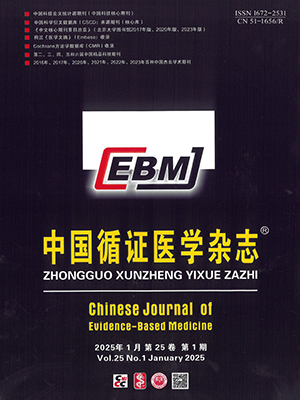| 1. |
Lemieux I, Pascot A, Couillard C, et al. Hypertriglyceridemic waist:a marker of the atherogenic metabolic triad (hyperinsulinemia; hyperapolipoprotein B; small, dense LDL) in men? Circulation, 2000, 102(2):179-184.
|
| 2. |
Arsenault BJ, Lemieux I, Després JP, et al. The hypertriglyceridemic-waist phenotype and the risk of coronary artery disease:results from the EPIC-Norfolk prospective population study. CMAJ, 2010, 182(13):1427-1432.
|
| 3. |
Gomez-Huelgas R, Bernal-López MR, Villalobos A, et al. Hypertriglyceridemic waist:an alternative to the metabolic syndrome? Results of the IMAPStudy (multidisciplinary intervention in primary care). Int J Obes (Lond), 2011, 35(2):292-299.
|
| 4. |
Yu Z, Sun L, Qi Q, et al. Hypertriglyceridemic waist, cytokines and hyperglycaemia in Chinese. Eur J Clin Invest, 2012, 42(10):1100-1111.
|
| 5. |
Rogowski O, Shapira I, Steinvil A, et al. Low-grade inflammation in individuals with the hypertriglyceridemic waist phenotype:another feature of the atherogenic dysmetabolism. Metabolism, 2009, 58(5):661-667.
|
| 6. |
中国成人血脂异常防治指南制订联合委员会. 中国成人血脂异常防治指南. 中华心血管病杂志, 2007, 35(5):390-419.
|
| 7. |
Grundy SM, Cleeman JI, Daniels SR, et al. Diagnosis and management of the metabolic syndrome:an American Heart Association/National Heart, Lung, and Blood Institute Scientific Statement. Circulation, 2005, 112(17):2735-2752.
|
| 8. |
心血管疾病合并高尿酸血症诊治专家共识专家组. 无症状高尿酸血症合并心血管疾病诊治建议中国专家共识. 心脑血管病防治, 2010, 10(4):253-256.
|
| 9. |
中华医学会神经病学分会脑血管病学组缺血性脑卒中二级预防指南撰写组. 中国缺血性脑卒中和短暂性脑缺血发作二级预防指南. 中华神经科杂志, 2010, 43(2):154-160.
|
| 10. |
Smith SC Jr, Benjamin EJ, Bonow RO, et al. AHA/ACCF Secondary Prevention and Risk Reduction Therapy for Patients With Coronary and Other Atherosclerotic Vascular Disease:2011 Update:A Guideline From the American Heart Association and American College of Cardiology Foundation. Circulation, 2011, 124(22):2458-2473.
|
| 11. |
Nawabzad R, Champin B. Concordance between three definitions for metabolic syndrome (Hypertriglyceridemic waist, National Cholesterol Education Program, International Diabetes Federation), and prevalence of the syndrome in a French population. Rev Prat, 2010, 60(10 Suppl):15-23.
|
| 12. |
Blackburn P, Lemieux I, Alméras N, et al. The hypertriglyceridemic waist phenotype versus the National Cholesterol Education Program-Adult Treatment Panel III and International Diabetes Federation clinical criteria to identify high-risk men with an altered cardiometabolic risk profile. Metabolism, 2009, 58(8):1123-1130.
|
| 13. |
Tankó LB, Bagger YZ, Qin G, et al. Enlarged waist combined with elevated triglycerides is a strong predictor of acceleratedatherogenesis and related cardiovascular mortality in postmenopausal women. Circulation, 2005, 111(15):1883-1890.
|
| 14. |
Hayashi T, Boyko EJ, McNeely MJ, et al. Visceral adiposity, not abdominal subcutaneous fat area, is associated with an increase in future insulin resistance in Japanese Americans. Diabetes, 2008, 57(5):1269-1275.
|
| 15. |
Bouchard C. BMI, fat mass, abdominal adiposity and visceral fat:where is the "beef"? Int J Obes (Lond), 2007, 31(10):1552-1553.
|
| 16. |
Koska J, Stefan N, Permana PA, et al. Increased fat accumulation in liver may link insulin resistance with subcutaneous abdominal adipocyte enlargement, visceral adiposity, and hypoadiponectinemia in obese individuals. Am J Clin Nutr, 2008, 87(2):295-302.
|
| 17. |
Grundy SM. Metabolic syndrome pandemic. Arterioscler Thromb Vasc Biol, 2008; 28(4):629-636.
|




